PRODUCTION has started on a Southern African-designed and built unmanned aerial vehicle (UAV), the Eagle Owl, which is aimed at coping with African conditions.
SA is one of the most progressive countries in the world in the implementation of regulations for the use of unmanned aerial vehicles, more widely known as drones.
Adam Rosman, founder and MD of Aerial Monitoring Solutions, says it is the first drone in the country in its class to be manufactured from scratch.
"Currently there are no comparable products of this size and capability being built and sold in SA.
"Our major UAV competitors are based in the US, Europe and Israel and their products cost approximately 10 times more than our selling price.
"This price includes system familiarisation for operators, full technical back-up and a 12-month maintenance programme covering small and major services based on the flying time of the UAV, as is done with all sizes of manned aeroplanes," he says.
"The undeniable benefits of flying UAVs are that they are ideally suited for use in dangerous, dull and dirty conditions and can be used to undertake surveillance, search and response jobs, often far more cost-effectively than helicopters or fixed-wing aircraft, where pilots can face huge dangers.
"Our objective in designing the Eagle Owl was to produce an affordable UAV ideally suited to South African conditions — robust enough to fly in most weather conditions at various altitudes, cope with the African heat and dust, and withstand a certain amount of rough handling."
The team at Aerial Monitoring Solutions (AMS) are all South Africans. The eight include engineers with degrees in aeronautical and electrical engineering; aircraft mechanics with extensive know-how in the full-size aircraft industry; a remote control pilot; and a consultant with a PhD in robotics, machine learning and artificial intelligence with years of experience in algorithm and software development.
The Eagle Owl is made of fibreglass and carbon fibre. It has a 2.5m wingspan, is 1.1m long and weighs 8.5kg. The unmanned aerial vehicle is powered by a petrol engine which allows a flying time of five to six hours and a refuelling time of five to 10 minutes.
The drone does not require a runway for take-off and landing. It is propelled off an aluminium launcher and returns to ground by parachute, which is set to deploy at the launch site or at a preset landing location.
The launch rail has been designed to fold up to fit in the back of a light delivery vehicle. The aircraft is fully modular for ease of transportation and consists of three pieces that easily click together. If one of the parts of the aircraft is damaged it can be ordered from Aerial Monitoring Solutions and replaced without having to replace the entire UAV.
The aircraft has an operational radius of 10km, but this can be extended to 100km with live data and high-definition video streamed in real time. It can be flown manually or preprogrammed to fly on autopilot, and its flight path is charted and controlled at a ground-controlled base station.
The Eagle Owl can fly to a height of 19,000 feet but is restricted by the SA Civil Aviation Authority regulations to fly no higher than 400 feet. It cruises at 100km/hour with a top speed of 120km/hour.
It is being sold as a basic package that can be fully customised with a wide variation of additional features, such as thermal, night vision and infra-red cameras, which can be retro-fitted later.
The Eagle Owl fully complies with the regulations recently promulgated by the South African Civil Aviation Authority.
"SA is a world leader in the implementation of rules permitting UAVs to fly beyond the visual line of sight of the operator, which allows for legal long-distance flights by these unmanned aircraft," says Rosman. "These new regulations have opened the way for SA to become one of the world’s largest commercial operators of UAVs."
The Eagle Owl is the first version of drones being developed by the research and development department of Aerial Monitoring Solutions. The company is designing a smaller version of the Eagle Owl, which will have a wingspan of less than 1m, as well as a multicopter.
Both will be available for purchase this year.
"We will shortly be launching an app for our aircraft for computers and smartphones, with additional software for our UAV, such as automated collision avoidance by using machine learning techniques and image recognition," Rosman says. "Another app is being tested to automate game or wildlife counting with the help of complex algorithms," says Rosman.
"The majority of UAVs or drones which are locally available are actually toys which can be bought from hobby stores or on the internet," he says. "Unlike our product, which is capable of flying far out of the line of sight of the operator and can be airborne for five to six hours, these products are not really robust enough for some of the automated and preprogrammed applications we envisage," he says.
Aerial Monitoring Solutions says its drones can be used by antipoaching initiatives; to monitor cattle theft; to help farmers with game and cattle counting; for wildlife research and monitoring; and to monitoring breaches in farm and property fences.
Drones can also be used for monitoring borders; for monitoring power lines, railway lines and other infrastructure that night be susceptible to vandalism and cable theft; for inspecting roads and bridges; and for photography and fire monitoring.
In addition, they can be used for search and rescue missions in out-of-reach and dangerous locations; disaster relief efforts; transporting medicines to rural areas; terrain mapping and 3D mapping; parcel drops; and crowd control.
"The world is looking to Africa for the development of inexpensive, custom-designed UAVs," he says.
"Already a lot of African countries are interested in getting their own UAV legislation in place and SA is the forerunner in this", says Rosman.
"We are very excited about being part of this exciting and fast developing industry and we are determined that Aerial Monitoring Solutions will be an important company in the growth of this field."
-
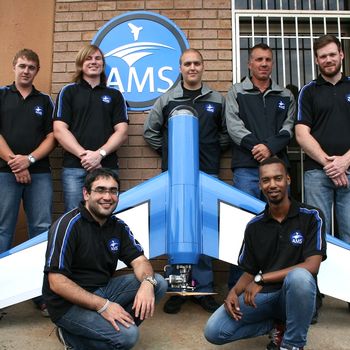
The AMS Team with the Eagle Owl, which has been designed in Southern Africa. (back, from left): Wesley Denysschen, Christopher O’Brien, Charles Cavanagh, Sean Franck and David Jones. (Front): Adam Rosman (MD) and Lesiba Mahapa (control systems engineer). Picture: SUPPLIED
-
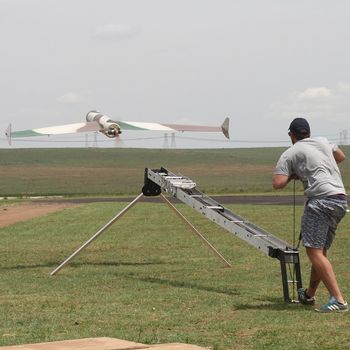
The Eagle Owl is launched. Picture: SUPPLIED
PRODUCTION has started on a Southern African-designed and built unmanned aerial vehicle (UAV), the Eagle Owl, which is aimed at coping with African conditions.
SA is one of the most progressive countries in the world in the implementation of regulations for the use of unmanned aerial vehicles, more widely known as drones.
Adam Rosman, founder and MD of Aerial Monitoring Solutions, says it is the first drone in the country in its class to be manufactured from scratch.
"Currently there are no comparable products of this size and capability being built and sold in SA.
"Our major UAV competitors are based in the US, Europe and Israel and their products cost approximately 10 times more than our selling price.
"This price includes system familiarisation for operators, full technical back-up and a 12-month maintenance programme covering small and major services based on the flying time of the UAV, as is done with all sizes of manned aeroplanes," he says.
"The undeniable benefits of flying UAVs are that they are ideally suited for use in dangerous, dull and dirty conditions and can be used to undertake surveillance, search and response jobs, often far more cost-effectively than helicopters or fixed-wing aircraft, where pilots can face huge dangers.
"Our objective in designing the Eagle Owl was to produce an affordable UAV ideally suited to South African conditions — robust enough to fly in most weather conditions at various altitudes, cope with the African heat and dust, and withstand a certain amount of rough handling."
The team at Aerial Monitoring Solutions (AMS) are all South Africans. The eight include engineers with degrees in aeronautical and electrical engineering; aircraft mechanics with extensive know-how in the full-size aircraft industry; a remote control pilot; and a consultant with a PhD in robotics, machine learning and artificial intelligence with years of experience in algorithm and software development.
The Eagle Owl is made of fibreglass and carbon fibre. It has a 2.5m wingspan, is 1.1m long and weighs 8.5kg. The unmanned aerial vehicle is powered by a petrol engine which allows a flying time of five to six hours and a refuelling time of five to 10 minutes.
The drone does not require a runway for take-off and landing. It is propelled off an aluminium launcher and returns to ground by parachute, which is set to deploy at the launch site or at a preset landing location.
The launch rail has been designed to fold up to fit in the back of a light delivery vehicle. The aircraft is fully modular for ease of transportation and consists of three pieces that easily click together. If one of the parts of the aircraft is damaged it can be ordered from Aerial Monitoring Solutions and replaced without having to replace the entire UAV.
The aircraft has an operational radius of 10km, but this can be extended to 100km with live data and high-definition video streamed in real time. It can be flown manually or preprogrammed to fly on autopilot, and its flight path is charted and controlled at a ground-controlled base station.
The Eagle Owl can fly to a height of 19,000 feet but is restricted by the SA Civil Aviation Authority regulations to fly no higher than 400 feet. It cruises at 100km/hour with a top speed of 120km/hour.
It is being sold as a basic package that can be fully customised with a wide variation of additional features, such as thermal, night vision and infra-red cameras, which can be retro-fitted later.
The Eagle Owl fully complies with the regulations recently promulgated by the South African Civil Aviation Authority.
"SA is a world leader in the implementation of rules permitting UAVs to fly beyond the visual line of sight of the operator, which allows for legal long-distance flights by these unmanned aircraft," says Rosman. "These new regulations have opened the way for SA to become one of the world’s largest commercial operators of UAVs."
The Eagle Owl is the first version of drones being developed by the research and development department of Aerial Monitoring Solutions. The company is designing a smaller version of the Eagle Owl, which will have a wingspan of less than 1m, as well as a multicopter.
Both will be available for purchase this year.
"We will shortly be launching an app for our aircraft for computers and smartphones, with additional software for our UAV, such as automated collision avoidance by using machine learning techniques and image recognition," Rosman says. "Another app is being tested to automate game or wildlife counting with the help of complex algorithms," says Rosman.
"The majority of UAVs or drones which are locally available are actually toys which can be bought from hobby stores or on the internet," he says. "Unlike our product, which is capable of flying far out of the line of sight of the operator and can be airborne for five to six hours, these products are not really robust enough for some of the automated and preprogrammed applications we envisage," he says.
Aerial Monitoring Solutions says its drones can be used by antipoaching initiatives; to monitor cattle theft; to help farmers with game and cattle counting; for wildlife research and monitoring; and to monitoring breaches in farm and property fences.
Drones can also be used for monitoring borders; for monitoring power lines, railway lines and other infrastructure that night be susceptible to vandalism and cable theft; for inspecting roads and bridges; and for photography and fire monitoring.
In addition, they can be used for search and rescue missions in out-of-reach and dangerous locations; disaster relief efforts; transporting medicines to rural areas; terrain mapping and 3D mapping; parcel drops; and crowd control.
"The world is looking to Africa for the development of inexpensive, custom-designed UAVs," he says.
"Already a lot of African countries are interested in getting their own UAV legislation in place and SA is the forerunner in this", says Rosman.
"We are very excited about being part of this exciting and fast developing industry and we are determined that Aerial Monitoring Solutions will be an important company in the growth of this field."



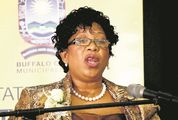
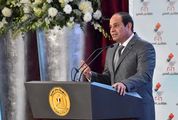





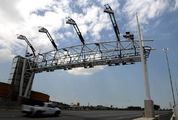












Change: -1.10%
Change: -1.15%
Change: -0.75%
Change: -0.98%
Change: -2.05%
Data supplied by Profile Data
Change: -0.22%
Change: 0.11%
Change: -1.10%
Change: 0.00%
Change: 0.05%
Data supplied by Profile Data
Change: -0.24%
Change: -0.15%
Change: -0.22%
Change: -0.37%
Change: -0.93%
Data supplied by Profile Data
Change: 0.39%
Change: 1.17%
Change: 0.13%
Change: -0.35%
Change: -2.22%
Data supplied by Profile Data